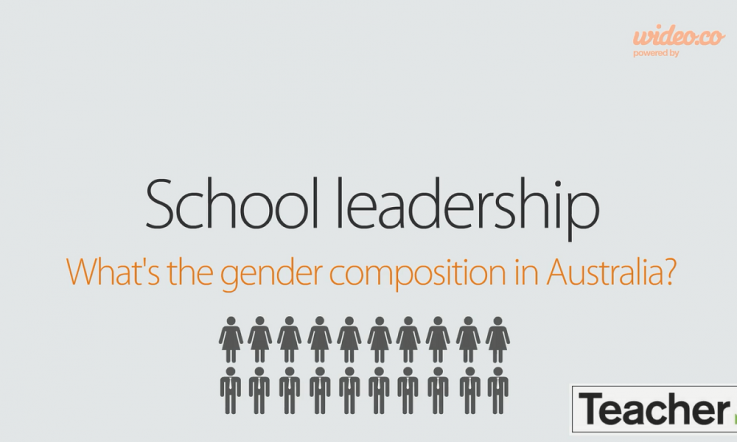The teaching profession is getting older and is becoming increasingly unattractive to young students, data from a new report from the Organisation for Economic Co-operation and Development (OECD) show.
Released last night, Education at a Glance 2017 compares key educational metrics from 35 countries, including on the output of institutions; the impact of learning; the financial and human resources invested; and the participation and progression being made.
The report shows that across OECD countries, 33 per cent of primary to secondary teachers were at least 50 years old in 2015, up 3 percentage points from 2005. In addition, the profession is still largely dominated by women, who make up seven out of 10 teachers on average across OECD countries.
The report also compares teacher salaries across OECD countries. The data show that teacher salaries are low compared to other similarly educated full-time workers, and the report suggests this could be a key obstacle for attracting young people into the teaching profession.
How does teacher pay compare?
On average across OECD countries, pre-primary teachers' actual salaries are 78 per cent of earnings of tertiary-educated, 25-64 year-old, full-time, full-year workers.
Primary teachers are paid 85 per cent of these benchmark earnings, lower secondary teachers 88 per cent and upper secondary teachers 94 per cent.
The report notes teacher salaries were directly impacted by the economic downturn in 2008, with many either frozen or cut in some countries. ‘Between 2005 and 2015 teachers' statutory salaries decreased in real terms in one-third of the countries and economies with available data.'
The OECD average starting salaries of teachers with typical qualifications:
- Pre-primary: USD $29 636 (AUD $37 036)
- Primary: USD $30 838 (AUD $38 538)
- Lower secondary: USD $32 202 (AUD $40 242)
- Upper secondary: USD $33 824 (AUD $42 269)
The Australian average starting salaries of teachers with typical qualifications:
- Pre-primary: USD $41 267 (AUD $51 571)
- Primary: USD $40 902 (AUD $51 115)
- Lower secondary: USD $40 874 (AUD $51 080)
- Upper secondary: USD $40 874 (AUD $51 080)
The OECD average statutory salaries of teachers with 15 years of experience and typical qualifications:
- Pre-primary: USD $39 227 (AUD $49 022)
- Primary: USD $42 864 (AUD $53 567)
- Lower secondary: USD $44 623 (AUD $55 765)
- Upper secondary: USD $46 631 (AUD $58 274)
The Australian average statutory salaries of teachers with 15 years of experience and typical qualifications:
- Pre-primary: USD $59 029 (AUD $73 768)
- Primary: USD $59 361 (AUD $74 183)
- Lower secondary: USD $59 425 (AUD $74 263)
- Upper secondary: USD $59 425 (AUD $74 263)
Teachers with maximum qualifications at the top of their salary scales are paid, on average across OECD countries:
- Pre-primary: USD $52 470 (AUD $65 571)
- Primary: USD $55 676 (AUD $69 578)
- Lower secondary: USD $59 147 (AUD $73 915)
- Upper secondary: USD $60 143 (AUD $75 160)
When comparing different countries, teachers with the maximum qualifications at the top of their salary scale earn: less than USD $25 000 (AUD $31,175) in the Czech Republic, Lithuania and the Slovak Republic; USD $75 000 (AUD $93 525) or more in Austria, the French Community of Belgium, Germany and Korea; more than USD $95 000 (AUD $118,465) in Switzerland; and, more than USD $135 000 (AUD $168 345) in Luxembourg.
Who are the teachers?
Age: On average across OECD countries, 32 per cent of primary school teachers were at least 50 years old in 2015. This average increases to 36 per cent at the lower secondary level and 40 per cent at the upper secondary level.
More than half of primary, lower secondary and upper secondary teachers are between the ages of 30 and 49. The average age of teachers increases from 43 in primary education to 45 in upper secondary education.
The United Kingdom has the largest proportion of young primary teachers (31 per cent under the age of 30) of all countries with available data. In contrast, in Italy and Portugal only 1 per cent of primary teachers are in that age group.
Gender: The teaching profession is still largely dominated by women, who make up seven out of 10 teachers on average across OECD countries. ‘However gender parity improves at higher levels of education – while 97 per cent of teachers at the pre-primary level are women, they make up 43 per cent at the tertiary level,' the report reads.
School leadership does not reflect the gender imbalance among teachers. ‘While the proportion of male teachers in primary schools is relatively small in many countries, in comparison there is an over-representation of male principals,' the report says, adding ‘This suggests that male teachers tend to be promoted to principal positions more often than female teachers – which is surprising, given that most principals are former teachers and most teachers are female.'
When considering their choice for future jobs, Education at a Glance suggests young people are influenced by their expectation for future earning potential. The report says that in every country with available data, male teachers earn less than their male tertiary-education counterparts in other professions. In contrast, female teachers in primary and lower secondary education earn virtually the same as women with a tertiary degree in other fields. ‘These differences in relative salaries for men and women are likely to make the teaching profession more appealing to women, especially at the lower levels of education.'
How much time do teachers spend teaching?
The report shows that the number of teaching hours per year required of the average OECD public school teacher in pre-primary, primary and secondary education varies considerably across countries and tends to decrease as the level of education increases.
‘Most countries regulate the number of hours per year that teachers are formally required to work, including teaching and non-teaching activities. Some of these countries regulate the specific number of hours required at school, while others set the overall working time, including hours at school and elsewhere,' the report reads.
At a pre-primary level, Australian teachers teach for 882 hours per year, 866 hours for primary school teachers, 806 for lower secondary school teachers and 804 hours for upper secondary school teachers.
The number of teaching days ranges from 162 or less in France and Lithuania to 225 in Norway. Annual teaching hours range from less than 700 in Korea, Lithuania and Mexico to almost 1500 in Germany.
Australian students receive the highest number of compulsory instructional hours (11 000 hours over 11 years) during their primary and lower secondary education, while students in Latvia receive the lowest (5976 hours over nine years). The average number of compulsory instructional hours across the OECD is 7538.
References
OECD (2017), Education at a Glance 2017: OECD Indicators, OECD Publishing, Paris. http://dx.doi.org/10.1787/eag-2017-en
Visit http://dx.doi.org/10.1787/eag-2017-en to download the full Education at a Glance 2017 report.



